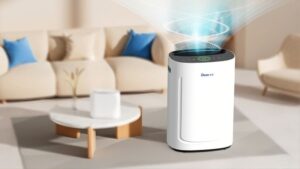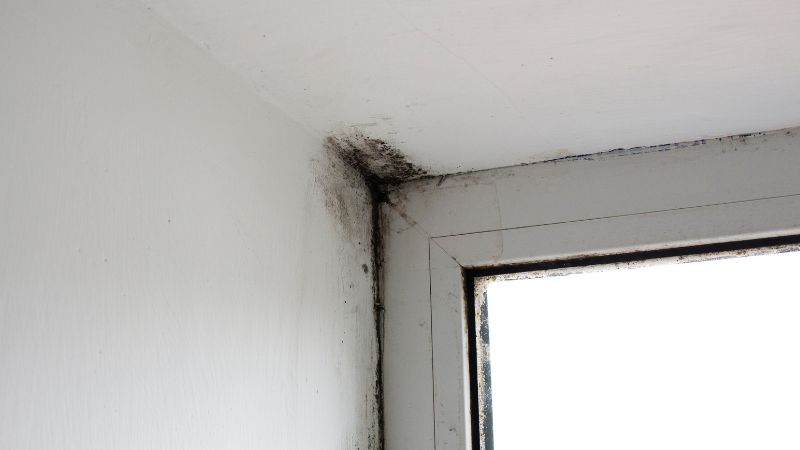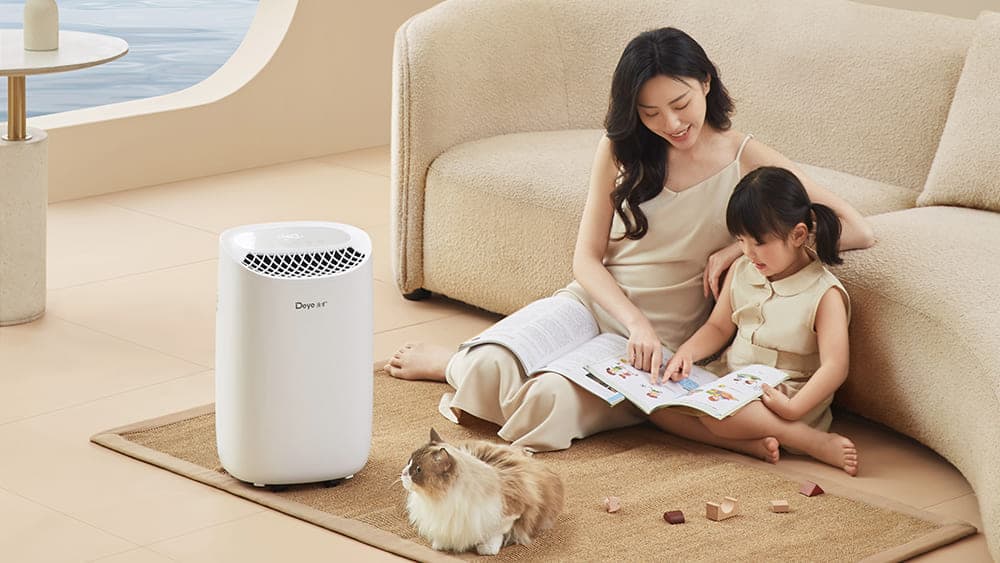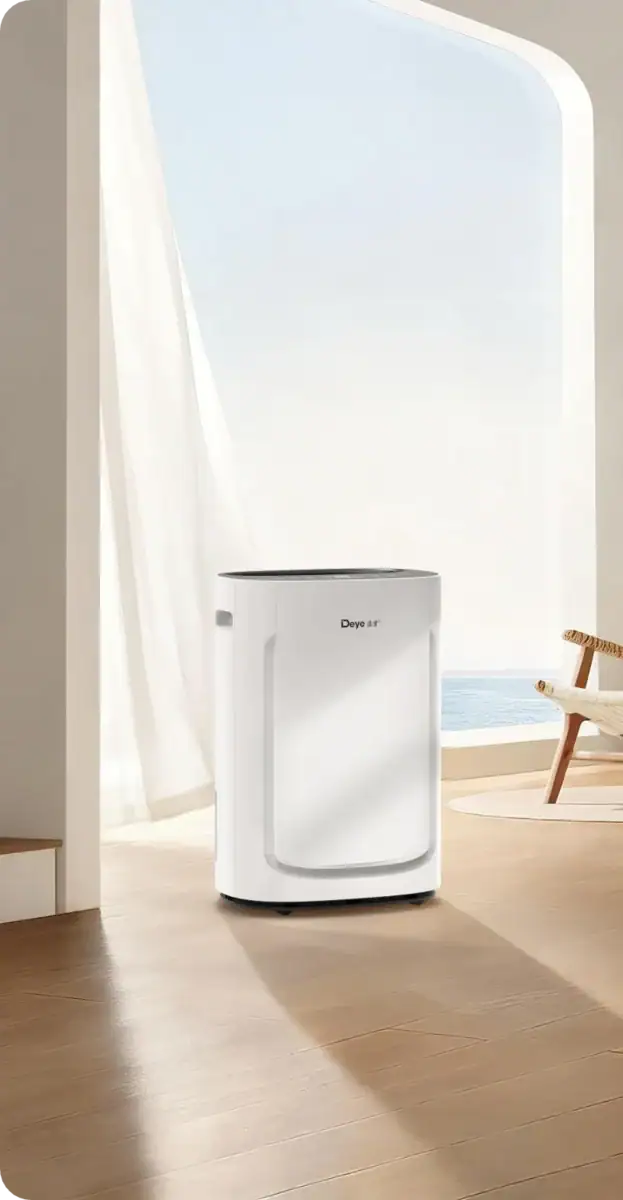The link between moisture/humidity and allergies is well documented. For example, moisture encourages the growth of mold, both indoor and outdoor. Dust mites also love humid air. All these could trigger allergies, and we all know that can make one’s life very difficult.
However, we have good news: conditions that trigger allergies can mostly be controlled. For instance, the United States Environmental Protection Agency advocates for using “dehumidifiers and air conditioners, especially in hot, humid climates, to reduce moisture in the air.”
Do you struggle with allergies caused by moisture? Are you looking for an effective solution? This article is just for you! We will focus on how moisture/humidity triggers allergies, the typical humidity levels that trigger allergies, how to get rid of moisture in your home, and how dehumidifiers could be part of the solution.
The Link between the Weather and Allergies

Even though our main focus in this article is humidity and moisture, we can better understand how these are linked to allergies by looking at the connection between allergies and the weather in general.
The weather plays a significant role in providing a conducive environment for allergens. MedicinePlus.gov describes an allergen as a substance that can cause an allergic reaction.
The health and medical news and information site, WebMD.com, explains how the weather affects allergies:
- Dry, windy days: The wind blows pollen into the air, and this triggers hay fever.
- Rainy or humid days: Moisture encourages mold growth and the proliferation of dust mites.
- Cold air: Cold air can trigger an attack for those who struggle with asthma.
- Heat:Air pollution gets worse on hot days when Ozone and smog can trigger asthma.
WebMD.com adds that seasonal changes can also have a substantial effect on allergies.
What is Humidity?
To better understand the connection between humidity and allergies, let’s start by defining humidity. Air comprises various gases, including oxygen, nitrogen, and many other substances like dust and water droplets.
The temperature determines the amount of water vapor in the air, ranging from close to 0% to about 4%. Humidity measures the amount of water in the air.
You may have heard the term “relative humidity” on the news. NationalGeographic.org explains that this means the “amount of water vapor actually in the air, expressed as a percentage of the maximum amount of water vapor the air can hold at the same temperature.”
NationalGeographic.org clarifies the idea of humidity further, using the example of a day when the temperature is -10 degrees Celsius (14 degrees Fahrenheit). At this temperature, the air can hold 2.2 grams of water per cubic meter, and humidity is 100% if the air is holding this amount. If the amount of water per cubic meter in the air at the same temperature were 1.1 grams, the humidity would be 50%.
Is there a difference between humidity and moisture? Indeed, there is a difference as moisture denotes the presence of a liquid in a given space, while humidity is a measure of the amount of water vapor in the air. High levels of humidity cause moisture, and high levels of moisture cause humidity.
How Does the Humidity Level Trigger Allergies?
Some causes of high humidity levels in buildings include leaking pipes, excessive rain seeping into a building, groundwater soaking up a building from the basement, or steam from showers.
When moisture accumulates in a building, it creates the perfect conditions for allergens to multiply. According to the Centers for Diseases and Control (CDC), “Exposure to damp and moldy environments may cause a variety of health effects, or none at all.”
The CDC adds that “exposure to molds can lead to symptoms such as a stuffy nose, wheezing, and red or itchy eyes/skin.” The same source also notes that “severe reactions may occur among workers exposed to large amounts of molds in occupational settings, such as farmers working around moldy hay.”
Interestingly it’s not just high humidity that triggers allergies; even low humidity can contribute. For instance, low humidity levels allow mold and dust to dry, which makes it easy to be blown around by the wind.
When allergens are in the air, it becomes easier to inhale them. With the nasal passage also being dry because of dry air, it becomes easy for the allergens to enter the lungs.
Which Humidity Levels Trigger Allergies?
If high humidity and low humidity levels make a place uncomfortable and can trigger allergies, which humidity levels should we aim for?
According to The Clinical Research Center, when indoor humidity is higher than 50%, it causes high levels of moisture. This moisture creates a conducive environment for allergens like cockroaches, mold, and dust mites to thrive.
The Clinical Research Center also reports that “When indoor humidity is too dry, less than 30%, it causes dry nasal passages, skin, and throat, which can be troublesome for many people.”
Based on the above insights, we can conclude that the appropriate indoor humidity level should be between 40% and 50%.
How to Measure Humidity Levels in your Home
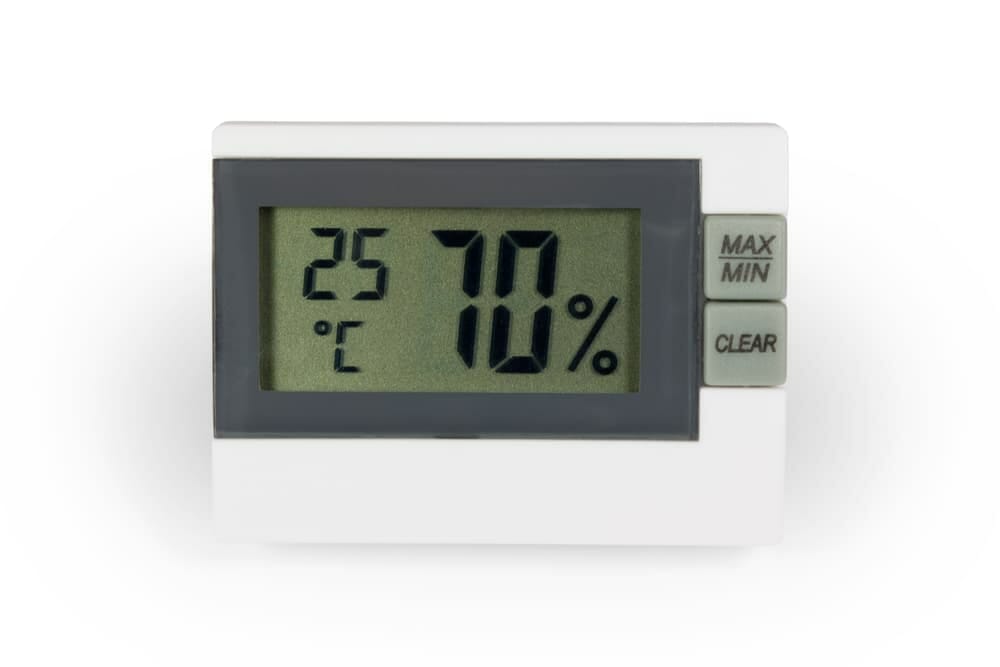
It’s great to know the most common home humidity levels that can trigger allergies, but how do I measure the humidity level in my home? This is an important question because it would be a challenge to control the allergens without knowing whether they are caused by excess moisture resulting from the humidity or not.
A San Francisco Bay local news source, SFGATE, reports, “A number of devices, such as a combined thermometer with a humidity dial, allow you to get an approximate reading for as little as $3, while fancier meters — technically called hygrometers — can provide more accuracy.”
SFGATE adds that the most basic humidity measuring devices simply tell you whether a given space’s humidity is between specific ranges such as 40-50%.
Getting Rid of Moisture
When it comes to humidity and moisture, the good news is that there are several simple things you can do to improve the situation. Dealing with high humidity levels will generally solve the problem of mold, dust mites, and other allergens that thrive in humid and moist environments.
IdealHome.co.uk lists some signs that can indicate that there is high humidity and excessive moisture in your home:
- Musty smell: A room or space has a damp smell that is noticeable when entering.
- Wall marks: Dark marks show that the specific part is moist.
- Peeling paint or wallpaper: This is usually caused by internal moisture.
- Excessive condensation on windows: There may be excessive moisture in the room if you notice excessive condensation on windows that doesn’t seem to subside even during the day.
Here are some tips you can follow to reduce the level of moisture caused by humidity in your home:
- Fix any leaks as soon as possible.
- Control humidity levels using a home dehumidifier.
- Ensure that all areas are clean and dry after they have been flooded.
- Allow air to move freely around your home.
- Frequently clean the surfaces where molds grow.
- Never allow water to collect around your house.
The Role of Humidifiers

Thanks to modern technology, controlling humidity is now as easy as pushing a button on a dehumidifier.
HealthLine.com explains how a dehumidifier works: “By drawing warm air currents into its coils via a fan.” The same source adds, “The warm air contracts as it’s fed through the refrigerated coils of the machine, and condensation is left inside the dehumidifier.”
HealthLine.com clarifies that the collected water vapor is stored in the dehumidifier’s storage tank. The dehumidifier then releases cooler and drier air into the home.
Choosing the Right Dehumidifier
The home advice website Bobvilla.com provides some tips on how you can select the right dehumidifier for your needs. The site begins by noting that you need to determine the scope of the problem first.
For example, suppose high humidity is a problem across the whole house; you may need to get a large whole-house dehumidifier that connects to your house’s HVAC system.
On the other hand, a cheaper, portable dehumidifier will allow you to target a specific place in your home.
A vital element emphasized by Bobvilla.com when selecting a dehumidifier is energy efficiency. The site reports, “Energy Star-rated dehumidifiers use about 15% less energy than conventional units.”
Tips for Controlling Allergies
While you can do everything possible to control the humidity levels in your home, it’s impossible to do the same outdoors. The Asthma and Allergy Foundation of America (AAFA) advises that your best line of defense is to limit the time you spend outdoors during seasons when mold counts are high.
The AAFA also encourages wearing “a dust mask when cutting grass, digging around plants, picking up leaves and disturbing other plant materials.”
It’s also important to ensure that your home remains free of dust that may provide shelter for dust mites. Getting rid of your carpet may be a great idea because carpets are ideal breeding spaces for dust mites.


